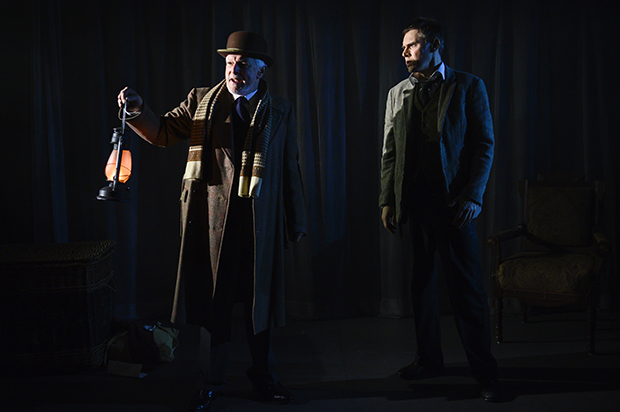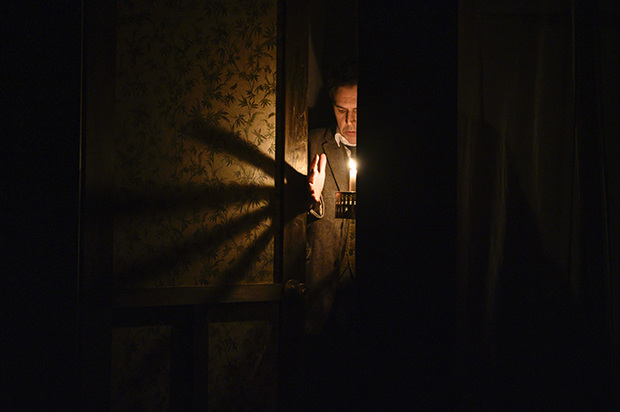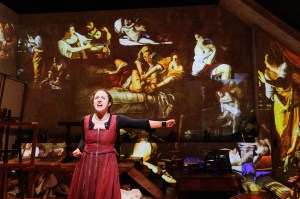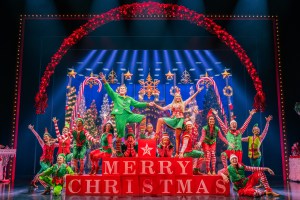The Woman in Black Is Scaring New York Theatergoers out of Their Wits
London’s long-running ghost story finds a new haunt off-Broadway.

(© Jenny Anderson)
Do you believe in ghosts? You might just after witnessing The Woman in Black, the theatrical ghost story now making audiences scream and jump out of their seats at the McKittrick Hotel. Even if you think the story is weak tea (and I do), the stagecraft will make the hairs on the back of your neck stand at attention.
The Woman in Black is Stephen Mallatratt's stage adaptation of Susan Hill's 1983 gothic novel about a creepy old house on a marshy coast of England and the specter that haunts it. Solicitor Arthur Kipps (David Acton) recounts his eerie visit to Eel Marsh House, when he was sent to collect documents and order the affairs of the recently deceased resident, Alice Drablow. In order to tell this story, he has beseeched the help of an actor (Ben Porter), who eventually takes over the central role while Kipps plays all of the other parts — all except for one: the mysterious woman in black.

(© Jenny Anderson)
This metatheatrical frame is the invention of Mallatratt, whose adaptation has greatly contributed to the enduring fame of this middling ghost story: The play has run continuously on the West End since 1989, making it the second-longest-running play in London, behind The Mousetrap. While the B-movie plot is not one for the horror hall of fame, the mere act of placing it in a darkened theater while flawlessly executing tried-and-true scare tactics makes this a play that you can't help responding to with little yelps and jumps.
This New York staging is directed by Robin Herford, who also helmed the London production. While Herford toys with environmental staging (this run is subtitled "a ghost play in a pub"), he misses several opportunities to truly take advantage of the spooky surroundings of the McKittrick, which, of course, is home to the apex predator of immersive theater. While Porter does take a heart-pounding walk through the audience, his heavy breath amplified so that he seems to be breathing down our necks, most of the action takes place safely on the makeshift stage in front of us. Viewers need not worry about apparitions materializing behind them, and the only spirits hiding behind the bar are the ones you can imbibe.

(© Jenny Anderson)
Still, Herford and company do plenty to scare us in this mostly traditional staging, proving that the fastest way to trigger someone's fear is not by invading their physical space, but by infiltrating their mind. Sound designer Sebastian Frost does this with abrupt, bone-chilling sound cues that seem to come from all directions; lighting designer Anshuman Bhatia achieves multiple ghostly effects, and regularly plunges us into total darkness.
As performers, Acton and Porter both fully inhabit this ghostly world, bringing us along on their terrifying journey. Even though the program only lists two actors, we feel the sinking suspicion that they (and by extension we) are not alone.
It's not a brilliant work of drama, but if you're looking for a midwinter fright, The Woman in Black is your ticket.











